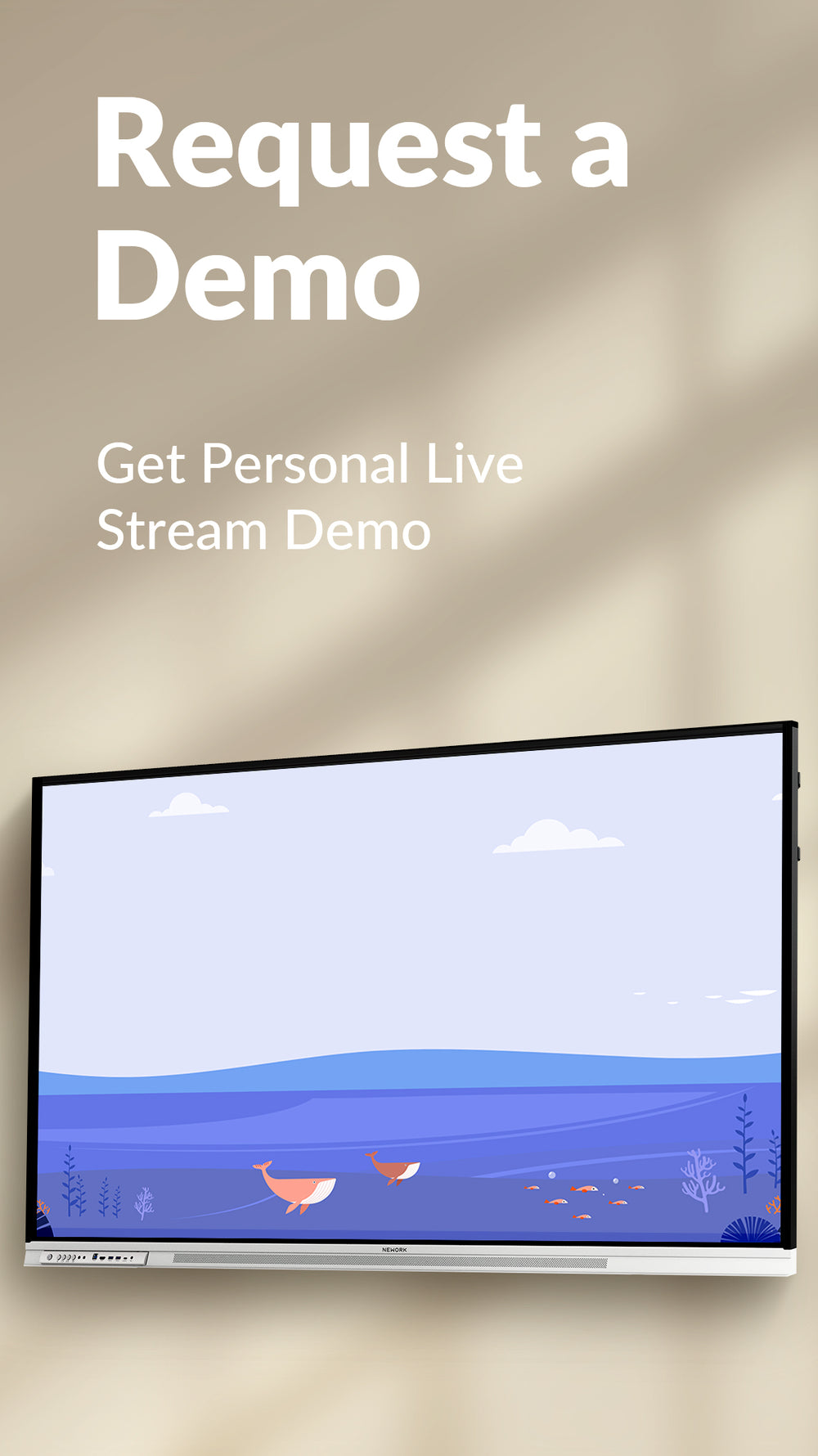As the education industry undergoes a digital transformation, the application of interactive whiteboards in classrooms is becoming increasingly widespread. These digital teaching tools not only transform traditional teaching methods but also enhance student engagement and learning outcomes through interactive features, personalized learning, and instant feedback. As an educator, how can we leverage interactive smart whiteboards to enhance the classroom experience? This article will delve into the future of smart boards, exploring how they fundamentally change classroom interaction and learning efficiency.
💡 1. The Profound Impact of Smart Whiteboards on Education
Interactive smart whiteboards break the traditional classroom limitations by integrating touch screen technology, dynamic displays, and multimedia content. They offer teachers and students an interactive, shared platform that significantly increases student engagement and interest. Real-time feedback allows educators to quickly assess each student's progress and adjust their teaching strategies accordingly.
Research from several educational institutions highlights that the introduction of smart whiteboards has revolutionized classroom teaching, demonstrating marked improvements in student concentration and engagement. For instance, at a middle school in California, the use of smart whiteboards led to a 50% increase in classroom interaction, with a notable rise in student satisfaction.
Explore our smart whiteboard solutions for education, specifically designed to provide every student with a personalized learning experience.

🖊️ 2. How Smart Whiteboards Enhance Student Engagement
- Real-Time Interaction: Making Every Student Part of the Learning Process
Unlike traditional whiteboards, smart whiteboards allow students to directly write, draw, and solve problems on the screen, breaking away from the one-way teacher-led model. Students can instantly share their thoughts and ideas on the board, boosting their interest and participation in class.
A survey of 200 schools worldwide revealed that 70% of students felt their interaction time in the classroom increased significantly after using smart whiteboards, making lessons more engaging and enjoyable.
- Personalized Learning: Catering to Individual Student Needs
Smart whiteboards’ customization features allow teachers to tailor learning content based on individual student needs. For example, educators can adjust question difficulty according to each student’s understanding or assign different tasks to suit various learning levels. This flexibility ensures that each student learns in the most effective way for them.
- Instant Feedback and Evaluation: Boosting Learning Efficiency
Smart whiteboards allow teachers to collect student responses and feedback in real time, enabling them to swiftly adjust teaching strategies to ensure that every student receives timely assistance. This efficient feedback mechanism not only improves teaching quality but also helps students quickly identify and correct learning gaps.
According to a study by Education Corner, the real-time evaluation functionality of smart whiteboards significantly increased the frequency of teacher-student interactions, ultimately boosting learning efficiency.
🌐 3. The Future of Smart Whiteboards in Education
Looking ahead, smart whiteboards will extend beyond traditional classroom settings, playing a crucial role in remote and hybrid learning environments. As education technology continues to evolve, smart whiteboards are becoming smarter and more personalized, offering even greater support for remote education.
For example, some smart whiteboards are already integrated with cloud technology, enabling students to interact with the board remotely while studying at home. This trend not only enhances the learning experience but also propels the digital transformation of education.
Discover more about the role of smart whiteboards in remote learning and how they facilitate seamless online education.
📊 4. Case Studies: How Smart Whiteboards Enhance Student Engagement
Smart whiteboards have already achieved remarkable results in educational institutions worldwide. At a high school in the United States, the introduction of smart whiteboards increased student classroom participation by 35%. Additionally, teachers reported being able to track each student’s progress more precisely, quickly identifying and addressing learning challenges.
These case studies not only highlight the potential of smart whiteboards in enhancing student engagement but also provide valuable insights for educators.

✅ 5. Conclusion
The use of smart whiteboards has not only transformed traditional teaching methods but also created a more efficient and interactive learning environment for both students and teachers. As technology continues to evolve, smart whiteboards will play a greater role in the education sector, driving innovation and improving classroom interaction.
If you want to learn more about how our smart whiteboard solutions can enhance classroom engagement and learning outcomes, visit our official website.



Leave a comment
All comments are moderated before being published.
This site is protected by hCaptcha and the hCaptcha Privacy Policy and Terms of Service apply.